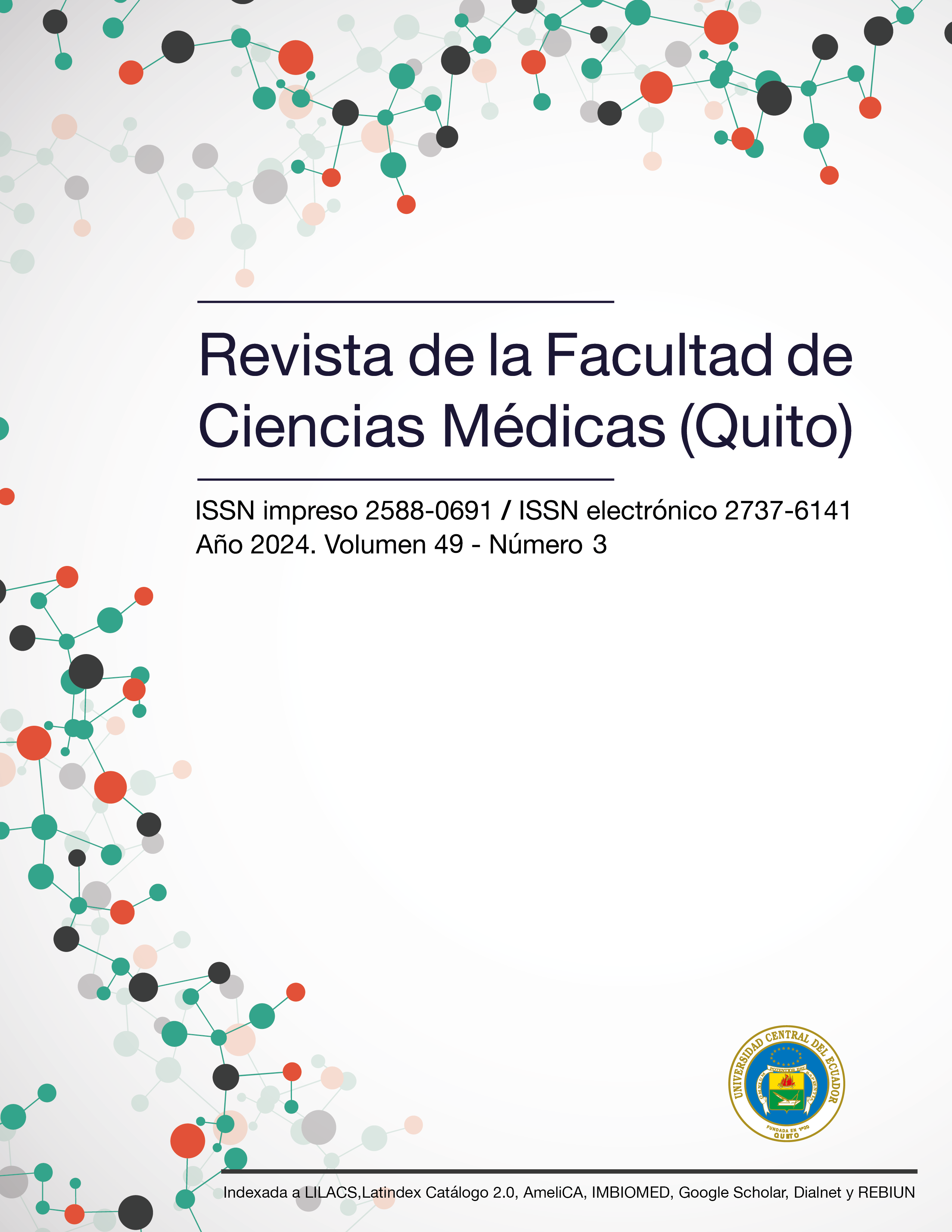The association between knowledge of condom use and its practice among young adults
DOI:
https://doi.org/10.29166/rfcmq.v49i3.6758Keywords:
knowlegde, condoms, young adults, sexually transmitted infectionsAbstract
Introduction: Sexually transmitted infections (STIs) are a world public health problem. The correct and consistent use of condoms has been shown to be the most effective method of protection against STIs; however, the literature shows low figures for condom use.
Objective: To identify the relationship between knowledge about condom use and condom use in young adults.
Material and methods: A descriptive correlational design was used; the sample consisted of 969 young Mexican adults.
Results: 73.4% were women. The mean age was 38.98 years (SD = 5.39). Of the participants, 33.1% had had ten or more sexual partners in their lifetime, and 31.3% had had two sexual partners in the last 12 months. Regarding knowledge of condom use, 33.4% of the participants considered that condoms could be used at any time during sexual intercourse. Regarding condom use, 8.2% of the participants had never used a condom. Of these, 29.3% never and 40.5% sometimes insist on using a condom when they have sexual intercourse. Positive relationship was found between knowledge of condom use and condom use (rs =.172, p <.05).
Conclusions: The findings of the present study reflect the problem of non-use of condom and weakness of aspects concerning its correct use. Knowledge of condom use was related to condom use, indicating that the greater the knowledge, the greater the condom use in young adults.
Downloads
Metrics
References
Organización Mundial de la Salud (OMS) [Internet]. Infecciones de transmisión sexual [Internet]. 2021 [cited 2024 April 26]. Available from: https://www.who.int/es/news-room/fact-sheets/detail/sexuallytransmitted-infections-(stis)
Instituto Nacional de Estadística y Geografía (INEGI). Estadísticas a propósito del día internacional de la juventud [Internet]. 2014 [2024 April 24]. Available from: https://www.inegi.org.mx/contenidos/saladeprensa/aproposito/2014/juventud31.pdf
Programa Conjunto de las Naciones Unidas sobre el VIH/sida (ONUSIDA). Estadísticas mundiales sobre el VIH [Internet].2021 [2024 April 24]. Available from: https://www.unaids.org/sites/default/files/media_asset/UNAIDS_FactSheet_es.pdf
Organización Mundial de la Salud (OMS) .Cáncer cervicouterino[Internet]. 2022 [2024 April 24]. Available from: https://www.who.int/es/news-room/fact-sheets/detail/cervical-cancer
United States Department of Veterans Affairs (VA) Las Infecciones de transmisión sexual (ITS) en los adultos mayores[Internet]. 2021 [2024 April 24]. Available from: https://www.veteranshealthlibrary.va.gov/Spanish/DiseasesConditionsc142,87520_VA
Asare M. Using the theory of planned behavior to determine the condom use behavior among college students. American journal of health studies, 2015; 30 (1): 43-50.
Centers for Disease Control and Prevention (CDC) Condoms [Internet]. 2018 [2024 April 24].Available from: https://www.cdc.gov/hiv/risk/condoms.html
Dilorio C, Parsons M, Lehr S, Adame D, Carlone J. Measurement of Safe Sex Behavior In Adolescents and Young Adults. Nursing Research [Internet].1992[2024 April 24]; 41 (4): 203-209. Available from: https://doi.org/10.1097/00006199-199207000-00003
Finkelstein N. Seis de cada 10 mexicanos no utilizan condón al realizar relaciones sexuales [Internet].2019 [2024 April 24]. Available from: https://mvsnoticias.com/noticias/actualidad/enmexico-seis-de-cada-10-no-usan-condon-en-relaciones-sexuales/
Kayiki SP, Renata F. Conocimientos relacionados con el VIH/SIDA y riesgo percibido asociado con el uso de condones entre adolescentes en Uganda. Revista africana de salud reproductiva. 2011;15 (1): 57-63.
Gray JR, Grove SK, Sutherland S. Burns and Grove’s The Practice of Nursing Research: Appraisal, Synthesis, and Generation of Evidence. 8th edition. Elsevier Health Sciences; 2017.
Baltar F, Gorjup MT. Muestreo mixto online: Una aplicación en poblaciones ocultas. Intangible Capital. 2012; 8 (1): 123-149.
Gómez DA. Modelo de conducta sexual más segura en adultos de mediana y tercera edad [disertación]. Universidad Autónoma de Nuevo León; 2021.
Stanton B, Deveaux L, Lunn S, Yu S, Brathwaite NLiX, MarshalL S, et al. Condom-use skills checklist: a proxy for assessing condom-use knowledge and skills when direct observation is not possible. Journal of health, population, and nutrition [Internet]. 2009[2024 April 24]; 27 (3): 406-412. Available from: https://doi.org/10.3329/jhpn.v27i3.3383
Secretaría de Salud. Reglamento de la Ley General de Salud en Materia de Investigación para la Salud[Internet]. 1987 [2024 April 24]; Available from:http://www.salud.gob.mx/unidades/cdi/nom/compi/rlgsmis.html
Cámara de Diputado del H. Congreso de la Unión [Internet]. Reglamento de la Ley General de Salud en Materia de Investigación para la Salud[Internet]. 2014[2024 April 24]. Available from:https://www.diputados.gob.mx/LeyesBiblio/regley/Reg_LGS_MIS.pdf
Bankole A, Ahmed FH, Neema S, Ouedraogo C, Konyani S. Conocimiento del uso correcto del condón y consistencia en el uso entre adolescentes en cuatro países del África subsahariana. Revista africana de salud reproductiva. 2007; 11 (3): 197-220.
Díaz NM, Hernández DZ, Velázquez SG, Zaleta NEV, Landa MIM. Uso del condón en personas de 18-45 años de la zona norte del estado de Veracruz. Revista Biológico Agropecuaria Tuxpan. 2019; 7 (2): 233-240.
Downloads
Published
How to Cite
Issue
Section
License
Copyright (c) 2024 Dra. Dafne Astrid Gómez Melasio, Dra. Nancy Griselda Pérez-Briones, Dr. Guillermo Cano-Verdugo, Dra. Alejandra Leija-Mendoza, Dra. Eva Kerena Hernández-Martínez

This work is licensed under a Creative Commons Attribution-NonCommercial-NoDerivatives 4.0 International License.










